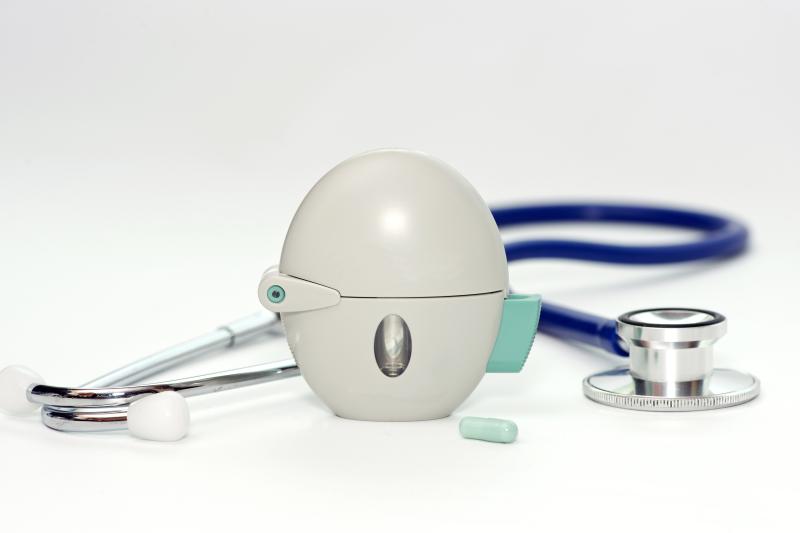
Treatment with indacaterol/glycopyrronium (IND/GLY) 110/50 μg once daily in patients with chronic obstructive pulmonary disease (COPD) who have not received long-acting bronchodilators (LABD) leads to improvements in lung function, daily symptoms, dyspnoea, health-related quality of life and rescue medication compared with use of long-acting muscarinic antagonists (LAMA), a study has shown.
“Given the safety of LABA/LAMA combinations such as IND/GLY, the results of the current analysis suggest that initial therapy with two bronchodilators may be considered in LABD‐naïve symptomatic COPD patients,” the researchers said.
The efficacy of IND/GLY vs open-label (OL) tiotropium (TIO) 18 μg once daily and GLY 50 μg once daily in LABD-naïve COPD patients was assessed in a pooled analysis of ARISE, SHINE and SPARK trials. The researchers evaluated efficacy after 24/26 weeks of treatment.
A total of 998 LABD-naïve patients were included, of whom 353 were treated with IND/GLY, 328 with OL TIO and 317 with GLY. Patients in the IND/GLY group showed better improvements in trough forced expiratory volume in 1 s (FEV1) than those in the OL TIO group (least squares mean treatment difference (Δ), 0.086 L) and in the GLY group (Δ, 0.080 L) after 24/25 weeks. [Respirology 2020;25:393-400]
IND/GLY also provided greater improvements in electronic diary symptom scores, transition dyspnoea index (TDI) focal score, St George’s Respiratory Questionnaire (SGRQ) total score and rescue medication compared with OL TIO and GLY. In addition, more patients on IND/GLY achieved minimal clinically important difference in trough FEV1, TDI and SGRQ than did those on OL TIO and GLY.
The findings support those of a posthoc analysis of two 12-week OTEMTO studies, which reported improvement in trough FEV1, SGRQ total score and TDI with the use of TIO/olodaterol 5/5 μg once daily compared with TIO 5 μg once daily in treatment-naïve patients. [Respir Res 2016;17:73]
“However, it should be noted that these studies were of a 12‐week duration in patients with moderate‐to‐severe COPD, while our posthoc analysis included studies of at least 26 weeks' duration, and COPD severity ranged from moderate‐to‐very severe,” the researchers said.
In earlier studies, early initiation of maintenance therapy have been found to confer long-term benefits. Furthermore, an OL study in Japanese COPD patients reported improved lung function and quality of life with guideline-based pharmacotherapy in treatment-naïve patients compared with those who received prior COPD treatment, highlighting the importance of selection of initial therapy in these individuals. [Int J Chron Obstruct Pulmon Dis 2012;7:95-99; NPJ Prim Care Respir Med 2014;24:14003; Expert Opin Pharmacother 2015;16:2271-2281]
“Safety evaluations were not performed in this pooled analysis; however, the safety profile of all treatments is well established,” the researchers said. [Respir Med 2014;108:1498-1507; Int J Chron Obstruct Pulmon Dis 2018;13:1089-1104]
The present study was limited by its design and was not powered for comparison between treatment groups. There was also an unbalanced distribution of LABD-naïve patients across studies, which could be expected from posthoc analyses.